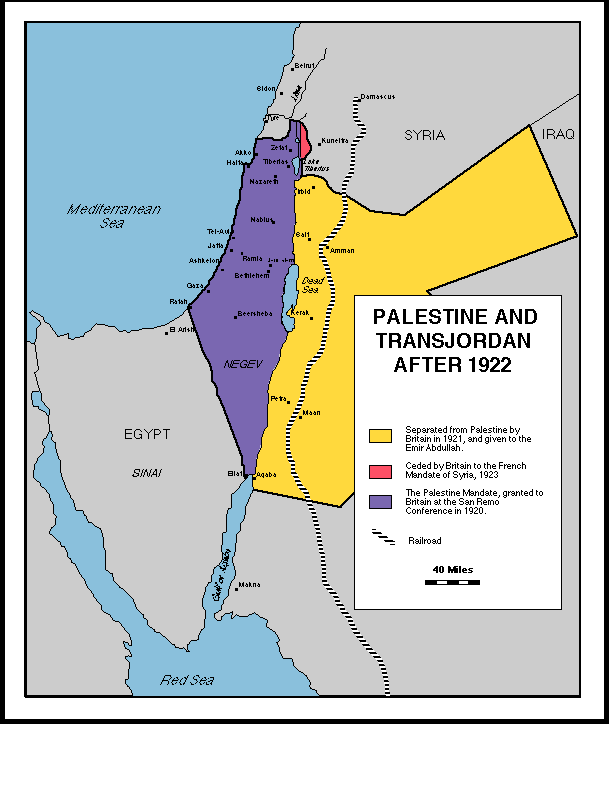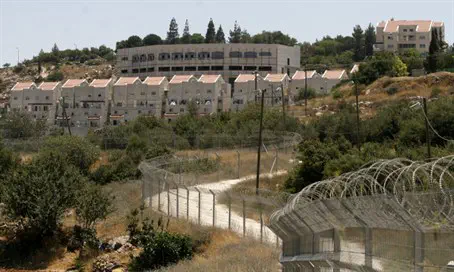Israel’s borders up for grabs
A NOTE about Kiryat Arba, one of the first post-Peres settlements, follows Jonathan Cook’s article.

Trump has reminded Palestinians that it was always about one state
By Jonathan Cook, Mondoweiss
February 22, 2017
For more than 15 years, the Middle East “peace process” [MEPP] initiated by the Oslo accords has been on life support. Last week, United States president Donald Trump pulled the plug, whether he understood it or not.
Israeli prime minister Benjamin Netanyahu could barely stifle a smile as Trump demoted the two-state solution from being the holy grail. Instead, he said of resolving the conflict: “I am looking at two states or one state … I can live with either one.”
Given the huge asymmetry of power, Israel now has a free hand to entrench its existing apartheid version of the one-state solution – Greater Israel – on the Palestinians. This is the destination to which Netanyahu has been steering the Israel-Palestine conflict his entire career.
It emerged this week that at a secret summit in Aqaba last year – attended by Egypt and Jordan, and overseen by US secretary of state John Kerry – Netanyahu was offered a regional peace deal that included almost everything he had demanded of the Palestinians. And still he said no.
Much earlier, in 2001, Netanyahu was secretly filmed boasting to settlers of how he had foiled the Oslo process a short time earlier by failing to carry out promised withdrawals from Palestinian territory. He shrugged off the US role as something that could be “easily moved to the right direction”.
Now he has the White House exactly where he wanted it.
In expressing ambivalence about the final number of states, Trump may have assumed he was leaving options open for his son-in-law and presumed peace envoy, Jared Kushner.
But words can take on a life of their own, especially when uttered by the president of the world’s only superpower.
Some believe Trump, faced with the region’s realities, will soon revert to Washington’s playbook on two states, with the US again adopting the bogus role of “honest broker”. Others suspect his interest will wilt, allowing Israel to intensify settlement building and its abuse of Palestinians.
The long-term effect, however, is likely to be more decisive. The one-state option mooted by Trump will resonate with both Israelis and Palestinians because it reminds each side of their historic ambitions.
The international community has repeatedly introduced the chimera of the two-state solution, but for most of their histories the two sides favoured a single state – if for different reasons.
From the outset, the mainstream Zionist movement wanted an exclusive Jewish state, and a larger one than it was ever offered. Some even dreamed of the recreation of a Biblical kingdom whose borders incorporated swaths of neighbouring Arab states.
In late 1947, the Zionist leadership backed the United Nations partition plan for tactical reasons, knowing the Palestinians would reject the transfer of most of their homeland to recent European immigrants.
A few months later they seized more territory – in war – than the UN envisioned, but were still not satisfied. Religious and secular alike hungered for the rest of Palestine. Shimon Peres was among the leaders who began the settlement drive immediately following the 1967 occupation.
Those territorial ambitions were muffled by Oslo, but will be unleashed again in full force by Trump’s stated indifference.
The Palestinians’ history points in a parallel direction. As Zionism made its first inroads into Palestine, they rejected any compromise with what were seen as European colonizers.
In the 1950s, after Israel’s creation, the resistance under Yasser Arafat espoused a single secular democratic state in all of historic Palestine. Only with the collapse of the Soviet Union and the Palestinians’ growing isolation in the early 1990s, did Arafat cave in to European and US pressure and sign up for partition.
But for Palestinians, Oslo has not only entailed enduring Israel’s constant bad faith, but it has also created a deeply compromised vehicle for self-government. The Palestinian Authority has split the Palestinian people territorially – between Fatah in the West Bank and Hamas in Gaza – and required a Faustian pact to uphold Israel’s security, including the settlers’, at all costs.

A Tablet diagram of the two-state fracture
The truth, obscured by Oslo, is that the one-state solution has underpinned the aspirations of Israelis and Palestinians for more than a century. It did not come about because each expected different things from it.
For Israelis, it was to be a fortress to exclude the native Palestinian population.
For Palestinians, it was the locus of national liberation from centuries of colonial rule. Only later did many Palestinians, especially groups such as Hamas, come to mirror the Zionist idea of an exclusive – if in their case, Islamic – state.
Trump’s self-declared detachment will now revive these historic forces. Settler leader Naftali Bennett will compete with Netanyahu to take credit for speeding up the annexation of ever-greater blocs of West Bank territory while rejecting any compromise on Jerusalem.
Meanwhile, Palestinians, particularly the youth, will understand that their struggle is not for illusory borders but for liberation from the Jewish supremacism inherent in mainstream Zionism.
The struggle Trump’s equivocation provokes, however, must first play out in the internal politics of Israelis and Palestinians. It is a supremely clarifying moment. Each side must now define what it really wants to fight for: a fortress for their tribe alone, or a shared homeland ensuring rights and dignity for all.
A version of this article first appeared in the National, Abu Dhabi.
Jonathan Cook won the Martha Gellhorn Special Prize for Journalism. His latest books are “Israel and the Clash of Civilisations: Iraq, Iran and the Plan to Remake the Middle East” (Pluto Press) and “Disappearing Palestine: Israel’s Experiments in Human Despair” (Zed Books). His new website is jonathan-cook.net.
NOTE
Early settlements in the Peres settlement drive

Kiryat Arba near Hebron is one of the first Jewish settlements in the oPt. It began, as all the early ones did, in the guise of a military installation. According to Haaretz a newly revealed secret document from 1970 confirms an open secret – many West Bank settlements were founded as military installations as it was illegal for Israel to build civilian towns in the area. [Secret 1970 Document Confirms First West Bank Settlements Built on a Lie]
Titled, “The Method for Establishing Kiryat Arba,” the document records a meeting in former Defence Minister Moshe Dayan’s office where it was decided to build “250 housing units in Kiryat Arba within the perimeter of the area specified for the military unit’s use.”
“All the building will be done by the Defence Ministry and will be presented as construction for the IDF’s needs,” the document went on. A “few days” after the base “completed its activities,” “the commander of the Chevron district will summon the mayor of Chevron, and in the course of raising other issues, will inform him that we’ve started to build houses on the military base in preparation for winter.”
